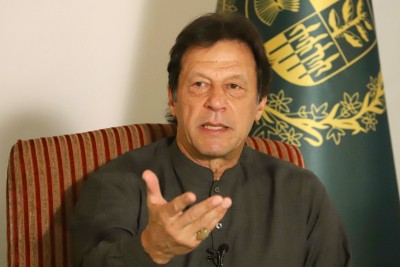By Mahua Venkatesh
New Delhi, Feb 9 : Foreign direct investment (FDI) inflow into Pakistan is slowing down. In the first half of the financial year 2020-21 – July to December– inflow of FDI fell by about 29.8 per cent to $952.6 million compared to $1.36 billion in the corresponding period of previous year, the State Bank of Pakistan data revealed. Pakistans lion share of FDI comes from China which is developing the much hyped $60 billion China Pakistan Economic Corridor (CPEC). According to a report carried by Dawn newspaper, Chinese investment into the country is slowing down.
This is happening at a time when Pakistan is “facing a chronic balance-of-payments problem with negative Net International Reserves, Pakistan needs to urgently woo non-debt-creating foreign investment, especially in export-oriented industries, to increase its overseas shipments and replace foreign debt to pay its import bill,” a report carried by Dawn newspaper said, adding that the south Asian country has never been a favoured destination of foreign investors.
“Chinese investment also has slowed down significantly since the completion of the ‘early harvest’ schemes related to CPEC. Chances of FDI flowing into new non-CPEC projects in the near to medium term appear to be very slim at the moment,” the report said.
It also underlined the need for Pakistan to focus on wooing non-debt creating foreign investment.
Pakistan Prime Minister Imran Khan has repeatedly underlined that the CPEC will lead to economic growth while creating employment. What is worrisome for Khan is that neither of the two has happened. “One of the thrust areas for the Prime Minister was the economy, he promised to fix the economic problems. Two and half years have passed since he took charge, the economy has only deteriorated,” a foreign policy analyst said.
Typically Pakistan with its intense domestic turmoil is not considered a hot FDI destination.
The CPEC project and other loans from China have also pushed up Pakistan’s debt problem.
Pakistan’s debt to GDP ratio has also soared to 107 per cent prompting many economists to believe that the country is slipping into a debt trap.
Debt to GDP ratio is a simple barometer of measuring the country`s repayment capacity in relation to its economic output. Naturally, the higher the debt to GDP ratio is, the higher the risk of default.
The Express Tribune noted that when Khan took charge, Pakistan’s debt was close to Rs 24.2 trillion and the last Pakistan Muslim League-Nawaz (PML-N) government added Rs5.65 billion a day to the public debt. “On average, per day addition to the public debt has jumped to Rs13.2 billion since the Pakistan Tehreek-e-Insaf (PTI) came to power,” the newspaper noted.
An article published in the China based newspaper Global Times said, “Pakistan is hobbled by a high fiscal and current account deficit, a large foreign debt and a resulting heavy debt repayment burden.”
It added that Islamabad’s ability to provide support funds for CPEC has declined, and there is large financial pressure to expand infrastructure construction. Loans that have been given to Pakistan by the International Monetary Fund loans came with conditions and “Pakistan will not be able to provide a large budget for the CPEC project while meeting these conditions.”
China’s ability to finance CPEC project is also reducing with a high default rate among the government owned firms and banks increasing amid global slowdown and the Covid 19 pandemic.
(This content is being carried under an arrangement with indianarrative.com)
Disclaimer: This story is auto-generated from IANS service.

